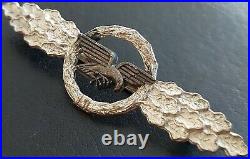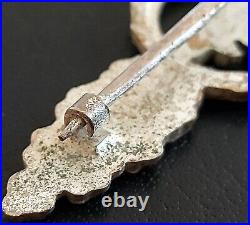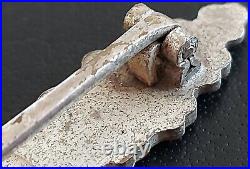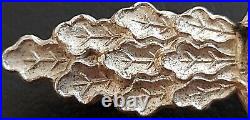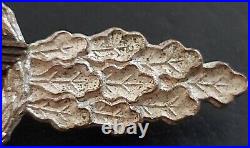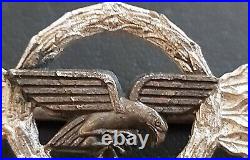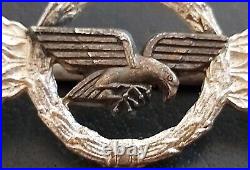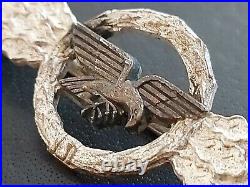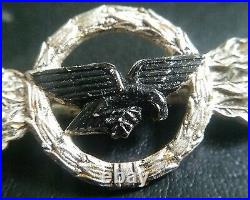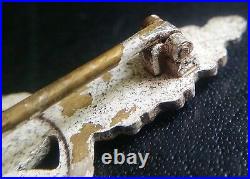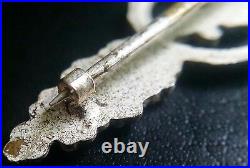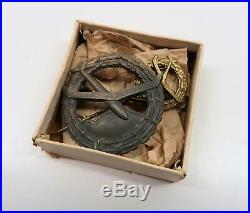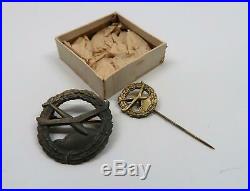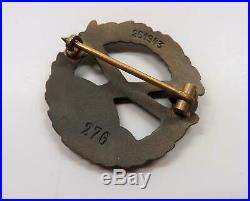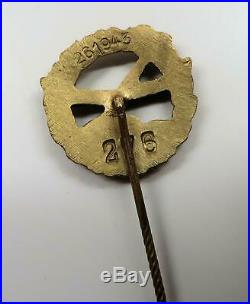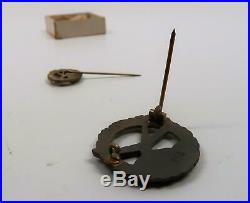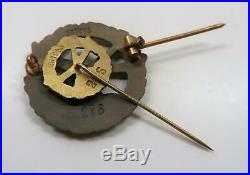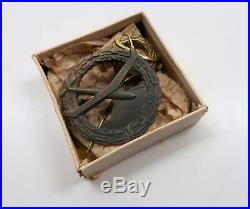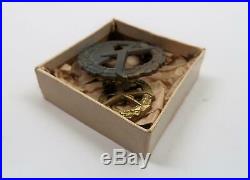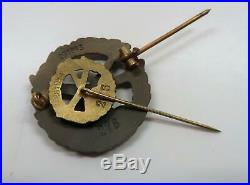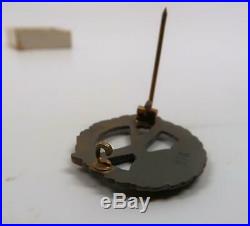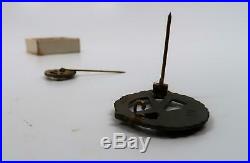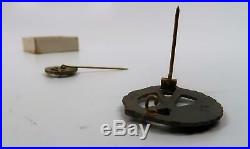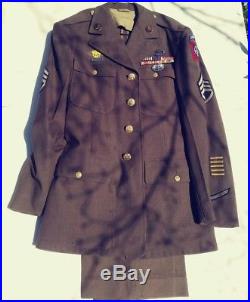Posts tagged glider
WW2 Original 101st Airborne 327th Glider Regiment “C” Co. Original 101st airborne Sargents grouping with 1945 airborne rank document. Vets name is underlined with notes that he is rated as a paratrooper. Original 101st airborne patch, glider wing, medals, not named. War time silk flag. Great original named airborne grouping.
PLEASE FOLLOW OUR E BAY STORE. SALE SEE OUR STORE. PLEASE READ WHOLE ADD. We do not want your feed back. We want your repeat business. We get that by posting new items at a fair price. 325th Glider Infantry Regiment. Two additional glider missions (“Galveston” and “Hackensack”) were made just after daybreak on June 7, delivering the 325th Glider Infantry Regiment to the 82nd Airborne. The hazards and results of mission Elmira resulted in a route change over the Douve River valley that avoided the heavy ground fire of the evening before, and changed the landing zone to LZ E, that of the 101st Airborne Division. The first mission, Galveston, consisted of two serials carrying the 325th’s 1st Battalion and the remainder of the artillery. Consisting of 100 glider-tug combinations, it carried nearly a thousand men, 20 guns, and 40 vehicles and released at 06:55. Small arms fire harried the first serial but did not seriously endanger it. Low releases resulted in a number of accidents and 100 injuries in the 325th (17 fatal). The second serial hit LZ W with accuracy and few injuries. Mission Hackensack, bringing in the remainder of the 325th, released at 08:51. The first serial, carrying all of the 2nd Battalion and most of the 2nd Battalion 401st GIR (the 325th’s “third battalion”), landed by squadrons in four different fields on each side of LZ W, one of which came down through intense fire. 15 troops were killed and 60 wounded, either by ground fire or by accidents caused by ground fire. The last glider serial of 50 Wacos, hauling service troops, 81 mm mortars. And one company of the 401st, made a perfect group release and landed at LZ W with high accuracy and virtually no casualties. By 10:15, all three battalions had assembled and reported in. With 90 percent of its men present, the 325th GIR became the division reserve at Chef-du-Pont. See also: List of military aircraft of the United_States § Glider. United States Army, Army Air Forces, and Air Force. Major General Henry “Hap” Arnold. Acting Deputy Chief of Staff for Air becoming Commanding General of the United States Army Air Forces. On March 9, 1942, initiated a study with view to develop a glider capable of being towed by aircraft. This directive was set into motion through Classified Technical Instructions (CTI-198 on 24 February 1941, and CTI-203 on 4 March 1941), which authorized the procurement of 2-, 8-, and 15-place gliders and equipment. Eleven companies were invited to participate in the experimental glider program, but only four responded with any interest, Frankfort Sailplane Company. (XCG-1, XCG-2), Waco Aircraft Company. (XCG-5, XCG-6), and Bowlus Sailplanes. Only Waco Aircraft Company was able to deliver the experimental glider prototypes that satisfied the requirements of Materiel Command, the eight-seat Waco CG-3. (modified to become a production nine-seat glider) and the fifteen-seat Waco CG-4. In October 1941, Lewin B. Was made Glider Specialist, Air Staff, HQ of the Army Air Forces, answering to General Arnold, and placed in charge of the glider program. The shock of the Japanese attack on Pearl Harbor. On 7 December 1941 prompted the United States to set the number of glider pilots needed at 1,000 to fly 500 eight-seat gliders and 500 fifteen-seat gliders. The number of pilots required was increased to 6,000 by June 1942. After Barringer was lost at sea on a flight to Africa in January 1943, the program came under direction of Richard C. Bigger gliders, such as the 30-troop Waco CG-13A. And the 42-troop Laister-Kauffman CG-10. A were designed later. Army film describing the use of military gliders during Operation Market. Duration: 1 minute and 51 seconds. The most widely used type was the Waco CG-4A, which was first used in the invasion of Sicily. In July 1943 and participated in the D-Day. Assault on France on 6 June 1944, and in other important airborne operations in Europe, including Operation Market Garden. In September 1944 and the crossing the Rhine. In March 1945, and in the China-Burma-India Theater. The CG-4A was constructed of a metal and wood frame covered with fabric, manned by a crew of two and with an allowable normal cargo load of 3,710 lb. Allowing it to carry 13 combat-equipped troops or a jeep or small artillery piece. The CG-10 could hold 10,850 lb of cargo, such as two howitzers. The final glider mission of the war was at Luzon. On 23 June 1945. By the end of the war, the United States had built 14,612 gliders of all types and had trained over 6,000 glider pilots. The designs of the Waco Aircraft Company were also produced by a wide variety of manufacturers including Ford Motor Company. And Cessna Aircraft Company. As well as furniture, piano and coffin manufacturers. Following World War II, the United States maintained only one regiment of gliders. Gliders were used in military exercises in 1949, but glider operations were deleted from the United States Army. S capabilities on 1 January 1953. However, the United States Air Force. Continues to use sailplanes. At the United States Air Force Academy. To train cadets in the fundamentals of flight. United States Navy and Marine Corps. In April 1941, United States Navy. Proposed that the Navy develop amphibious gliders with flying-boat. Hulls with a goal of deploying an amphibious glider force capable of delivering an entire United States Marine Corps. Of 715 men to a hostile beachhead, the gliders to be towed by Consolidated PBY-5A Catalina. The Navy’s Bureau of Aeronautics. Developed specifications for two types of amphibious glider, a single-hulled type which could carry 12 passengers and a twin-hulled type that could carry 24 passengers. Two companies, the Allied Aviation Corporation. And the Bristol Aeronautical Corporation. Received contracts to produce 100 gliders, and plans called for the procurement of 12,000 more amphibious gliders if the concept proved successful. No twin-hulled glider was built, but each company constructed the prototype of a single-hulled amphibious glider, the XLRA-1. By Allied Aviation and the XLRQ-1. The two prototypes made their first flights in early 1943, but by the time they did the Navy and Marine Corps already had concluded that the use of gliders to deliver Marines to beachheads was impractical. No further examples of the two glider types were built, and the Navy officially terminated the amphibious glider program on 27 September 1943. Testing of the two prototypes continued until early December 1943, apparently in connection with the development of a glider bomb. The Marine Corps established a glider training unit in early 1942 at Marine Corps Recruit Depot Parris Island. Using non-amphibious Pratt-Read LNE-1. Army Air Forces Waco CG-4A. Non-amphibious gliders for evaluation under the Navy designation LRW-1. Neither of these initiatives resulted in operational use of gliders by the U. Navy or Marine Corps.
Original German post WW2 / 1957 pattern Luftwaffe Transport & Glider Squadron Clasp in Silver – IN VERY NICE CONDITION, ORIGINAL ST&L (STEINHAUER UND LUECK) MADE LATER EXAMPLE (OPEN HINGEBLOCK), PERFECTLY WORKING PIN DEVICE, A GOOD EXAMPLE. FEW FACTS ABOUT THE 1057 PATTERN AWARDS. In 1957 the West German government authorised replacement Iron Crosses with an Oak Leaf Cluster in place of the swastika, similar to the Iron Crosses of 1813, 1870, and 1914, which could be worn by World War II Iron Cross recipients. The 1957 law also authorised de-Nazified versions of most other World War II-era decorations (except those specifically associated with Nazi Party organizations, such as SS Long Service medals, or with the expansion of the German Reich, such as the medals for the annexation of Austria, the Sudetenland, and the Memel region). The main government contract to manufacture and supply these new de-nazified WW2 1957 official decorations went to the world famous German firm Steinhauer & Lueck, Luedenscheid Germany. Knights Crosses, Iron Crosses, Wound Badges, Tank Assault Badges etc were re-designed by Steinhauer & Lück – often with the oak-leaf spray replacing the swastika, with S&L having the sole patent rights to all WW2 1957 German decorations. S&L did not have the whole monopoly on medal making, other famous firms such as Deschler & Sohn, BH Maher and Juncker also manufactured these new German decorations. Lüdenscheid is situated between the cities Dortmund and Bonn. It was here that one of the youngest medal firms was founded in 1889 by August Steinhauer and Gustav Adolf Lück. The first production began in a cellar, the customer base continued to increase. A property was bought at 51 Hochstrasse which is still home for this famous company today. During WW2 Steinhauer & Lück produced medals and badges, like the famous Knights Cross and many other types of medals and badges. In 1957 this company was awarded the contract to produce all the newly re-designed legal WW2 1957 de-nazified decorations, plus the contract to manufacture all of Germany’s official decorations including Germany’s highest order the Bundesverdienstkreuz. Only a very limited number of original WW2 1957 medals are still produced, mainly Iron Crosses, German Cross Gold & Silver & Wound Badges and are considered 100% genuine by the German Government. HISTORY OF THE AWARD. Luftwaffe Transport and Glider Squadron Clasp – to recognize the type and number of operational flights undertaken by aircrew and certain other Luftwaffe personnel, the FRONTFLUGSPANGE (literally “Front Flight Clasp”) was progressively introduced from January 1941. Commonly referred to by collectors as Flight Bars, Operational Flying Clasps or Squadron Clasps, these badges consist of a central device encircled by a wreath of laurel leaves set between two’wings’ of oak leaves. In most designs, the ubiquitous swastika is set at the base of the wreath. Clasps measure around 7.5cm x 2.5cm (3″ x 1″). The central device distinguishes between the types of flight undertaken. The color of the clasp, with the exception of the center which is usually blackened, identifies the number of flights achieved. Thus, the BRONZE clasp was awarded for 20 flights SILVER clasp was awarded for 60 flights GOLD clasp was awarded for 100 flights. Note that a flight was considered “operational” if the enemy was engaged or enemy airspace was penetrated by a given distance. If the number of hours in the air was exceeded by a given amount a single’sortie’ could also be counted as more than one flight towards an award of the Operational Flying Clasp. Transport and Glider Squadron Clasp: here the central device of the Luftwaffe eagle flying to the right denotes the award for Transport and Glider Squadron features at the base of the laurel wreath aircrew. This item is in the category “Collectables\Militaria\World War II (1939-1945)\Medals/ Ribbons”. The seller is “a..anderson” and is located in this country: GB. This item can be shipped worldwide.
- Country/Region of Manufacture: Germany
- Country/ Organization: Germany
- Theme: Militaria
- Type: Medals & Ribbons
- Conflict: World War II (1939-1945)
- Service: Air Force
- Era: 1945-Present
Original German Luftwaffe Transport & Glider Squadron Clasp in Silver / post WW2 – 1957 pattern – no swastika, VERY NICE CONDITION – ORIGINAL ST&L (STEINHAUER UND LUECK) EXAMPLE, WORKING PIN DEVICE – GOOD EXAMPLE. In 1957 the West German government authorised replacement Iron Crosses with an Oak Leaf Cluster in place of the swastika, similar to the Iron Crosses of 1813, 1870, and 1914, which could be worn by World War II Iron Cross recipients. The 1957 law also authorised de-Nazified versions of most other World War II-era decorations (except those specifically associated with Nazi Party organizations, such as SS Long Service medals, or with the expansion of the German Reich, such as the medals for the annexation of Austria, the Sudetenland, and the Memel region). The main government contract to manufacture and supply these new de-nazified WW2 1957 official decorations went to the world famous German firm Steinhauer & Lueck, Luedenscheid Germany. Knights Crosses, Iron Crosses, Wound Badges, Tank Assault Badges etc were re-designed by Steinhauer & Lück – often with the oak-leaf spray replacing the swastika, with S&L having the sole patent rights to all WW2 1957 German decorations. S&L did not have the whole monopoly on medal making, other famous firms such as Deschler & Sohn, BH Maher and Juncker also manufactured these new German decorations. Lüdenscheid is situated between the cities Dortmund and Bonn. It was here that one of the youngest medal firms was founded in 1889 by August Steinhauer and Gustav Adolf Lück. The first production began in a cellar, the customer base continued to increase. A property was bought at 51 Hochstrasse which is still home for this famous company today. During WW2 Steinhauer & Lück produced medals and badges, like the famous Knights Cross and many other types of medals and badges. In 1957 this company was awarded the contract to produce all the newly re-designed legal WW2 1957 de-nazified decorations, plus the contract to manufacture all of Germany’s official decorations including Germany’s highest order the Bundesverdienstkreuz. Only a very limited number of original WW2 1957 medals are still produced, mainly Iron Crosses, German Cross Gold & Silver & Wound Badges and are considered 100% genuine by the German Government. HISTORY OF THE AWARD. Luftwaffe Transport and Glider Squadron Clasp – to recognize the type and number of operational flights undertaken by aircrew and certain other Luftwaffe personnel, the FRONTFLUGSPANGE (literally “Front Flight Clasp”) was progressively introduced from January 1941. Commonly referred to by collectors as Flight Bars, Operational Flying Clasps or Squadron Clasps, these badges consist of a central device encircled by a wreath of laurel leaves set between two’wings’ of oak leaves. In most designs, the ubiquitous swastika is set at the base of the wreath. Clasps measure around 7.5cm x 2.5cm (3″ x 1″). The central device distinguishes between the types of flight undertaken. The color of the clasp, with the exception of the center which is usually blackened, identifies the number of flights achieved. Thus, the BRONZE clasp was awarded for 20 flights SILVER clasp was awarded for 60 flights GOLD clasp was awarded for 100 flights. Note that a flight was considered “operational” if the enemy was engaged or enemy airspace was penetrated by a given distance. If the number of hours in the air was exceeded by a given amount a single’sortie’ could also be counted as more than one flight towards an award of the Operational Flying Clasp. Transport and Glider Squadron Clasp: here the central device of the Luftwaffe eagle flying to the right denotes the award for Transport and Glider Squadron features at the base of the laurel wreath aircrew. This item is in the category “Collectables\Militaria\World War II (1939-1945)\Medals/ Ribbons”. The seller is “a..anderson” and is located in this country: GB. This item can be shipped worldwide.
- Type: Medals & Ribbons
- Era: 1945-Present
- Conflict: World War II (1939-1945)
- Country/ Organization: Germany
- Country/Region of Manufacture: Germany
- Theme: Militaria
- Service: Army
WW2 German pin cross badge medal Glider proficiency Luftwaffe pilot award & mini. Here is your chance to own an original Glider Proficiency badge set. Both pieces are numbered “276″ and are a true pair. Only half of the original issue box is included. The golden finish on the larger badge has faded some. Would look fantastic in a riker mount or display case. I never grade my items as mint, even though may be. If for any reason you require additional photos, please do not hesitate to ask. View My Other Items For Sale. Get Supersized Images & Free Image Hosting. Create your brand with Auctiva’s. Attention Sellers – Get Templates Image Hosting, Scheduling at Auctiva. Track Page Views With. Auctiva’s FREE Counter. The item “WW2 German pin cross badge medal Glider proficiency Luftwaffe pilot award & mini” is in sale since Sunday, February 17, 2019. This item is in the category “Collectibles\Militaria\WW II (1939-45)\Original Period Items\Germany\Medals, Pins & Ribbons”. The seller is “william_kramer” and is located in Naperville, Illinois. This item can be shipped to United States.
More details to follow.. The item “WW2 US Airborne Division Glider Infantry Uniform & Medal Grouping” is in sale since Sunday, April 15, 2018. This item is in the category “Collectibles\Militaria\WW II (1939-45)\Original Period Items\United States\Uniforms”. The seller is “hodag007″ and is located in Ripley, Ohio. This item can be shipped to United States.






























